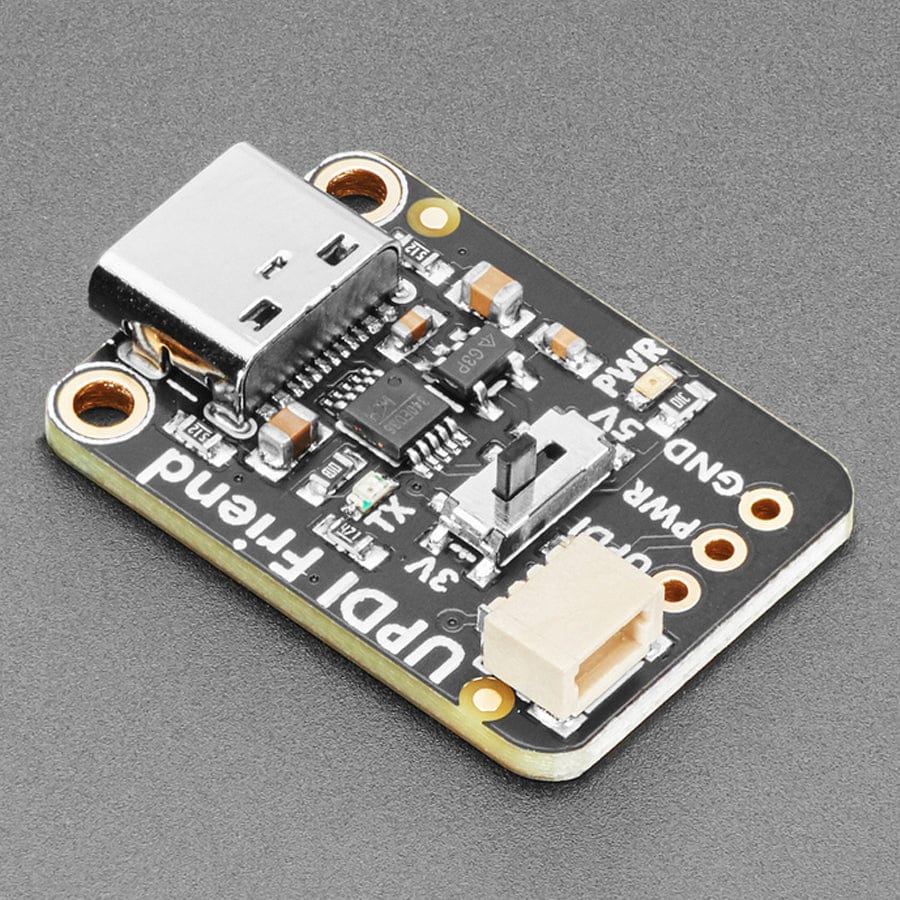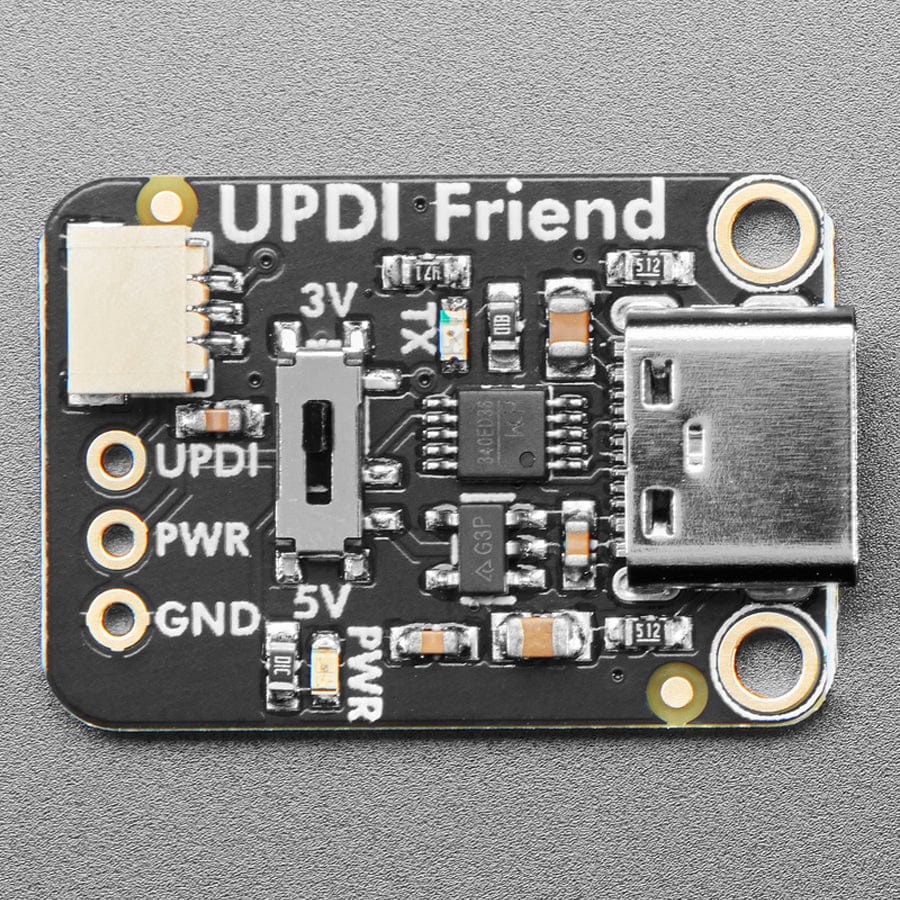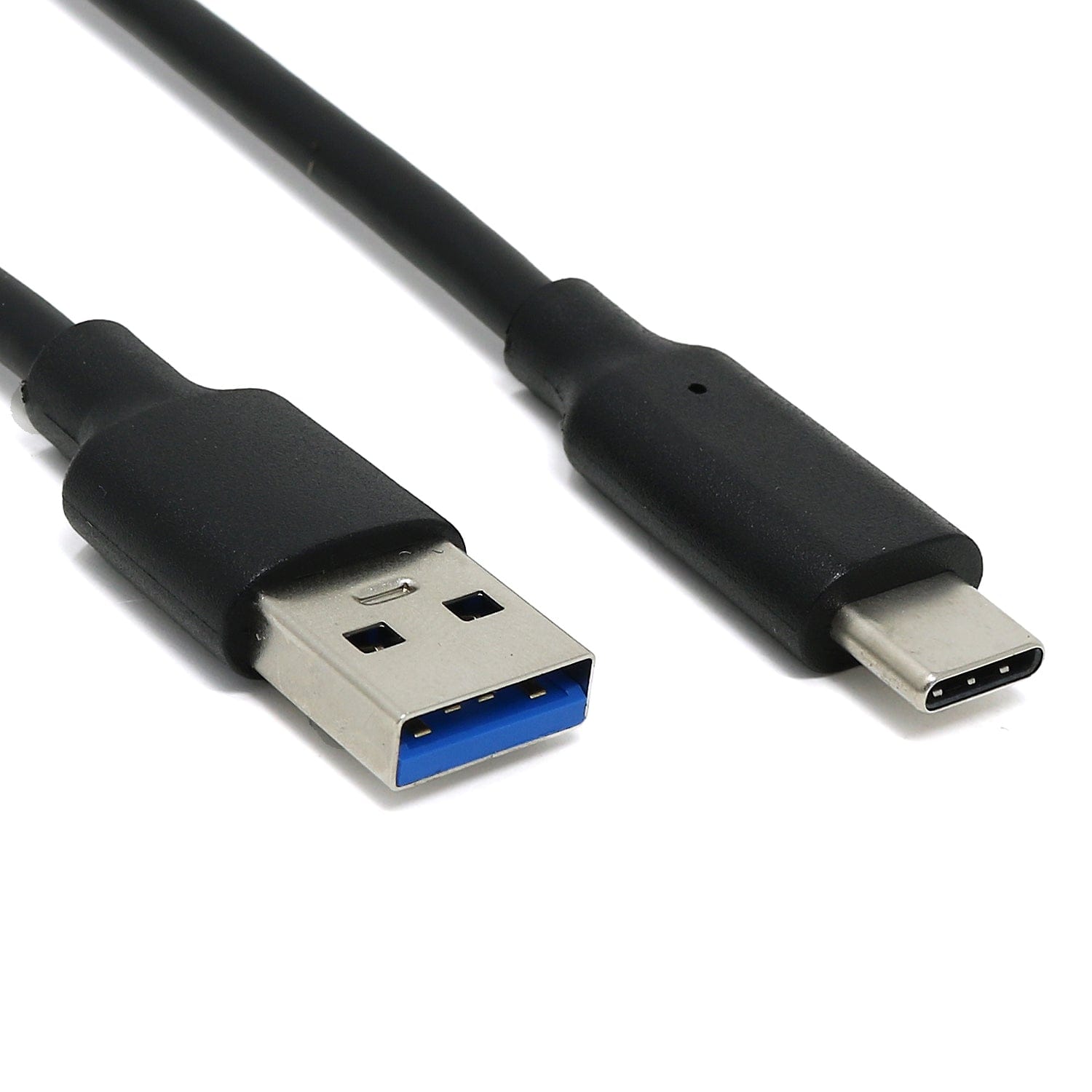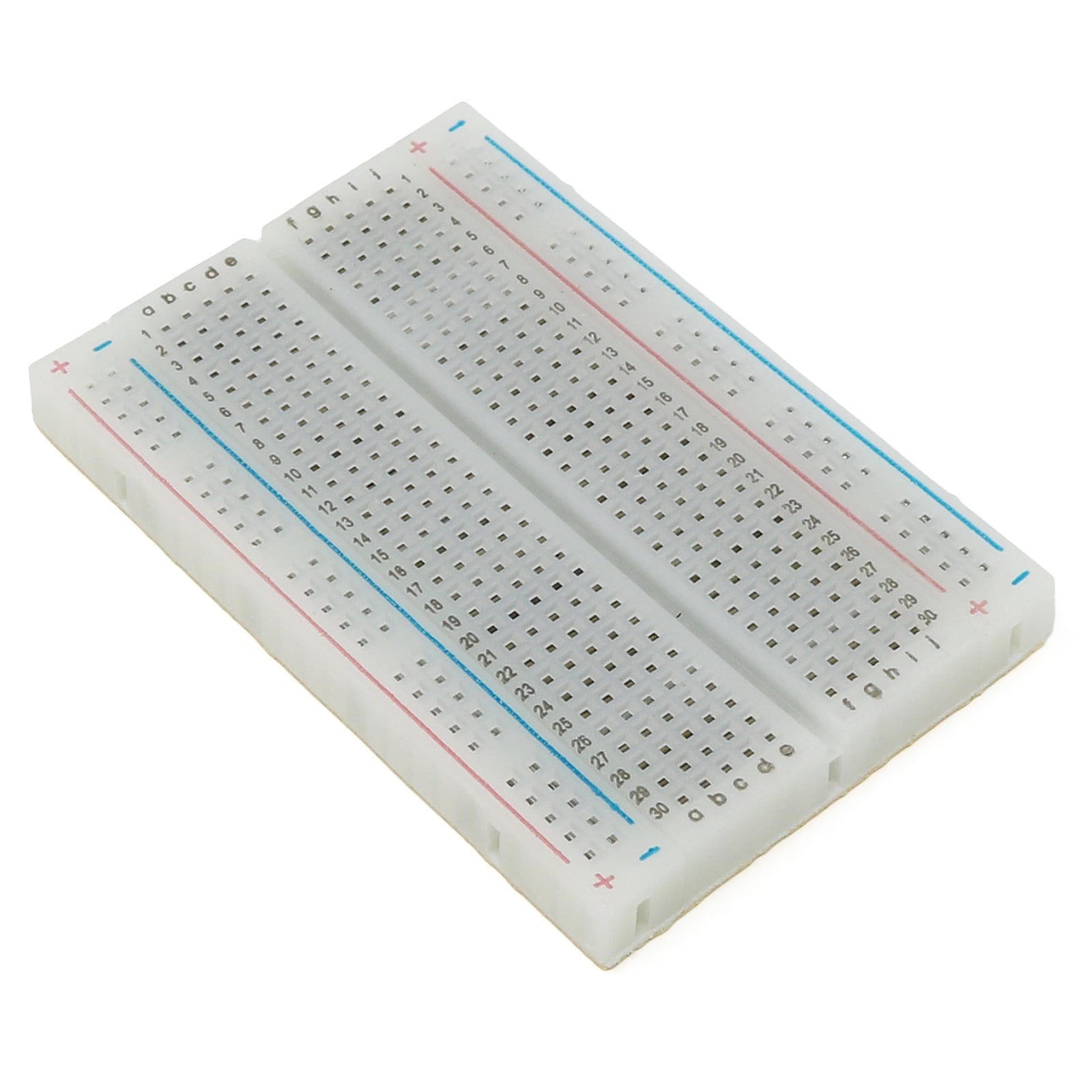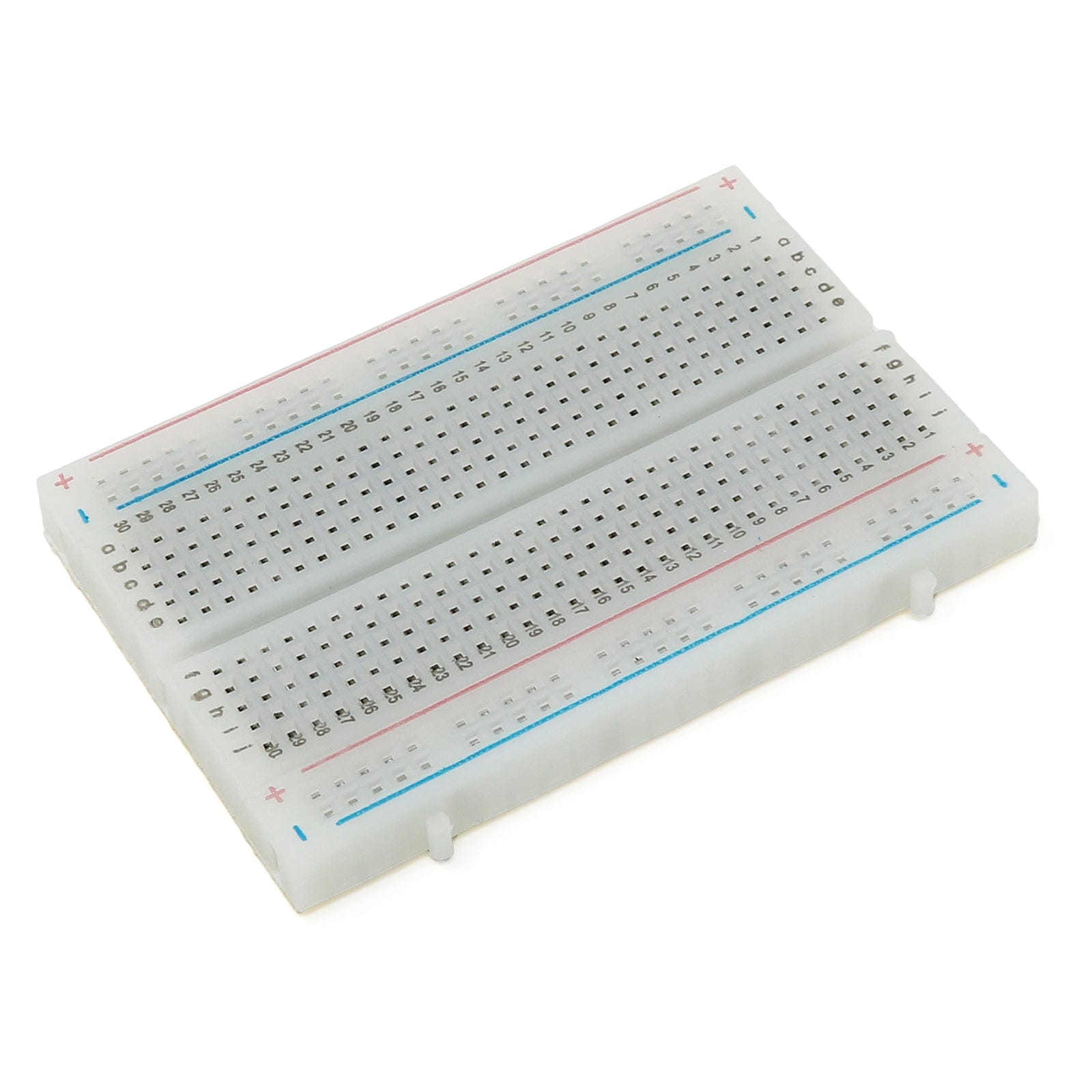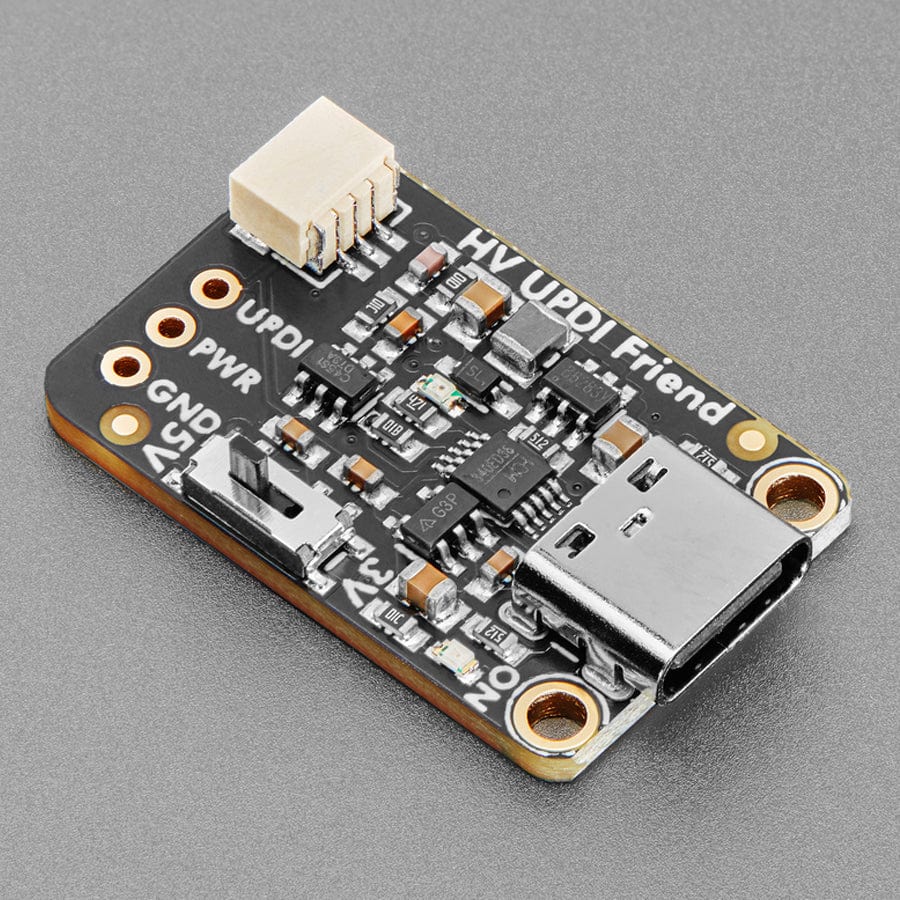
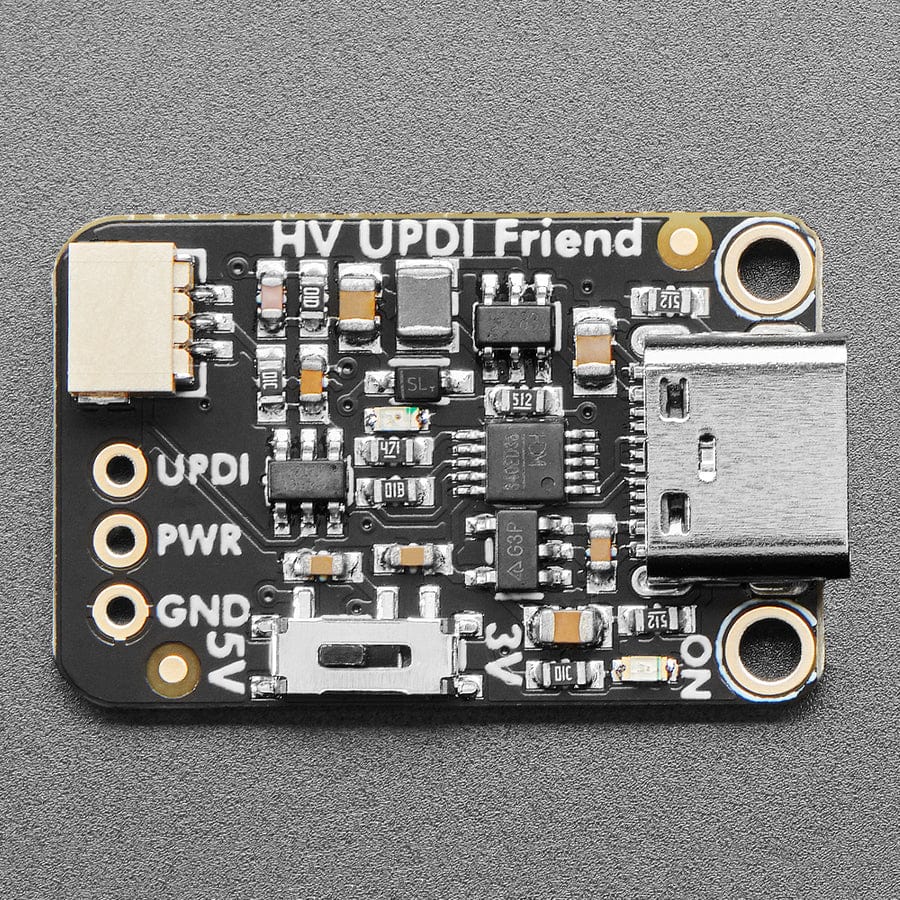
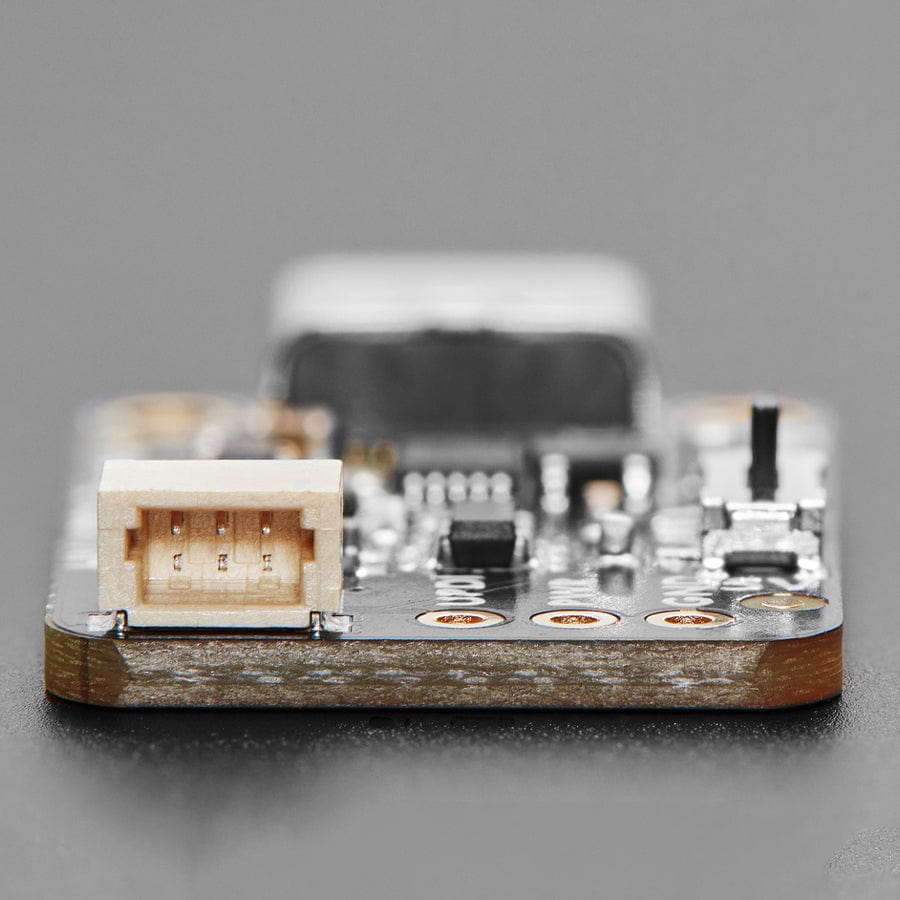
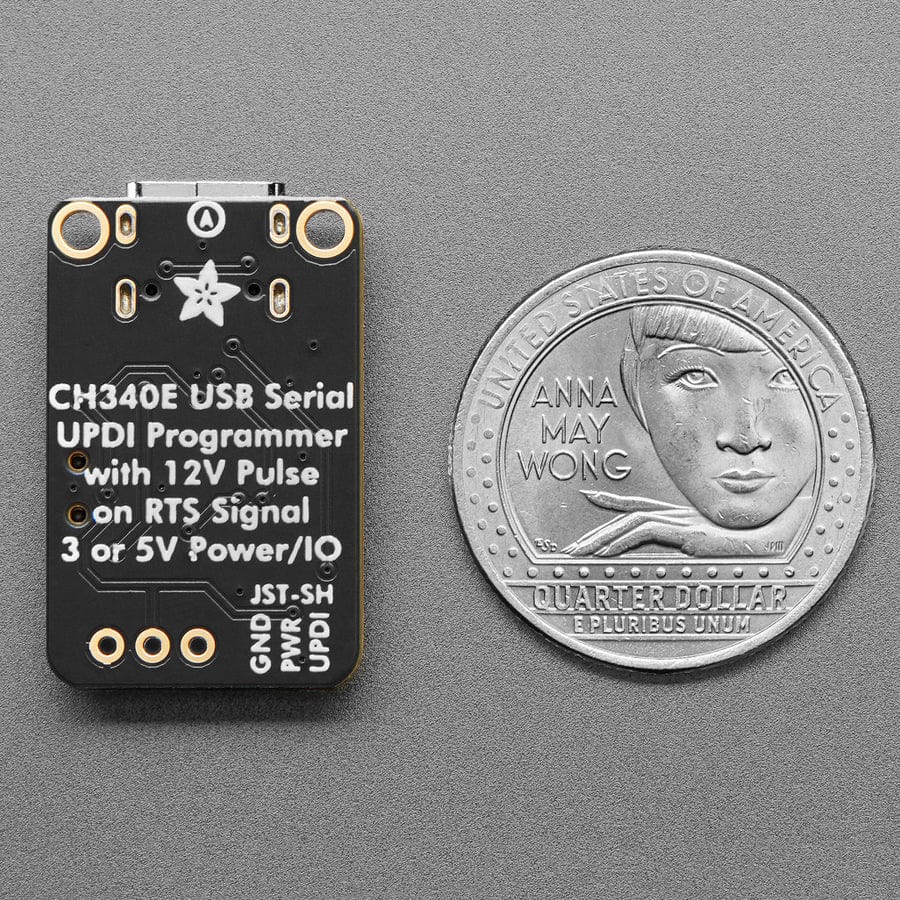
Login / Signup
Cart
Your cart is empty
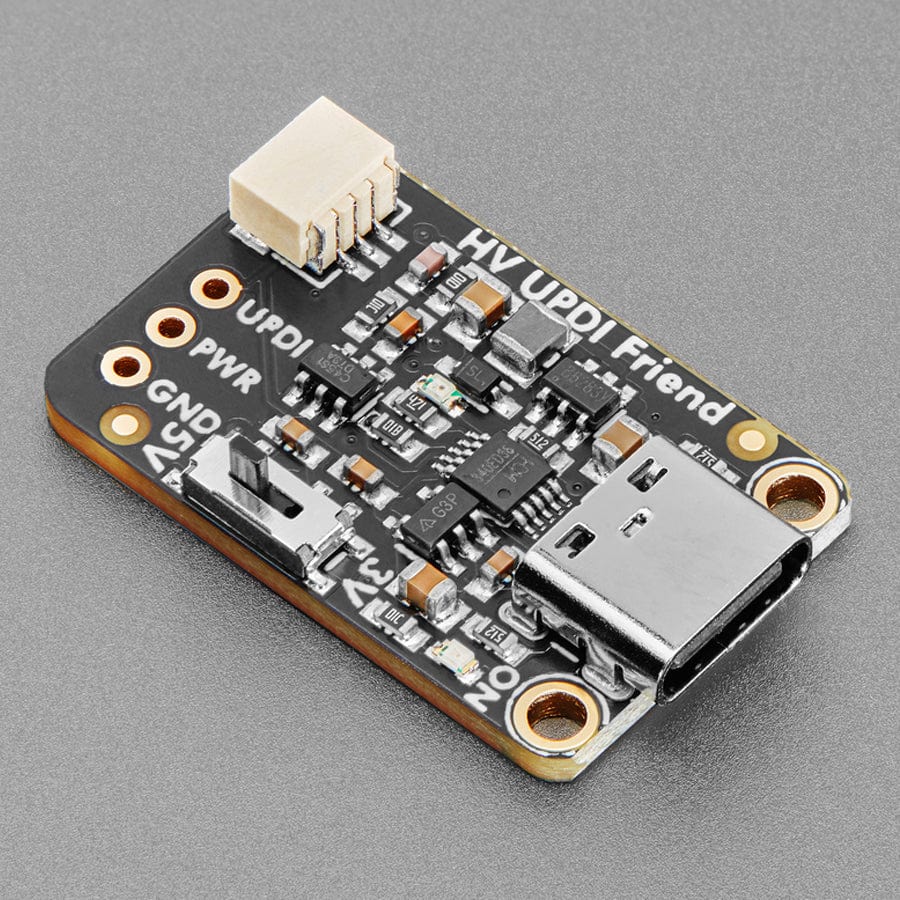
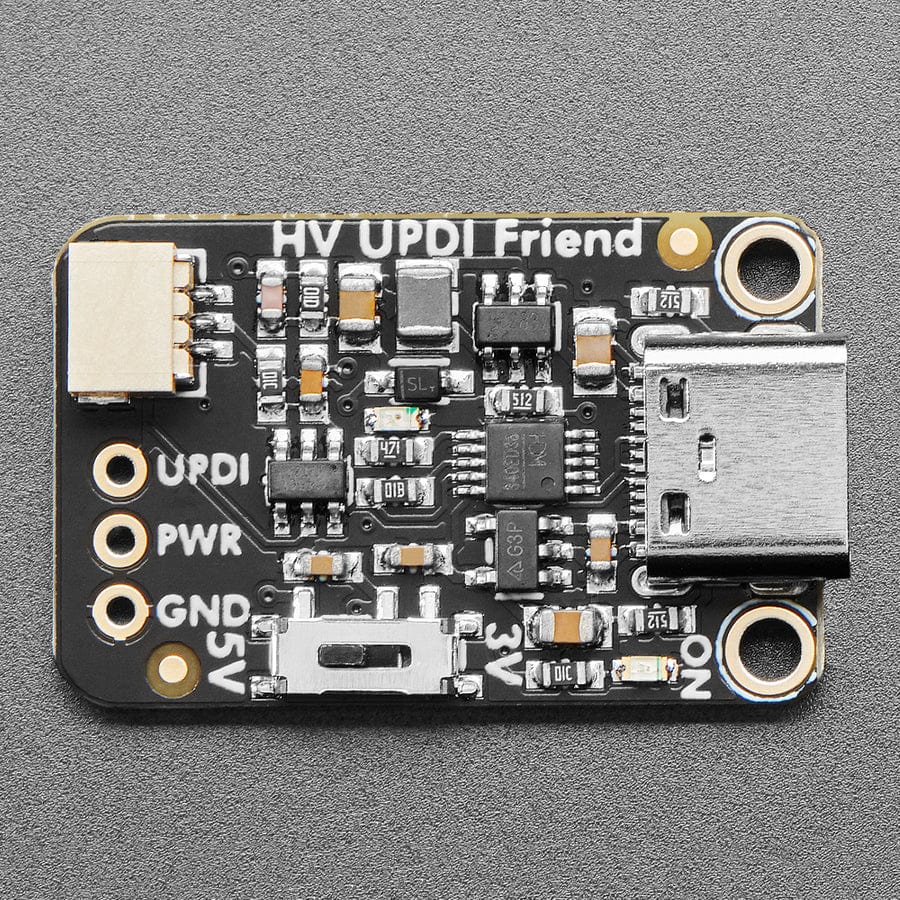

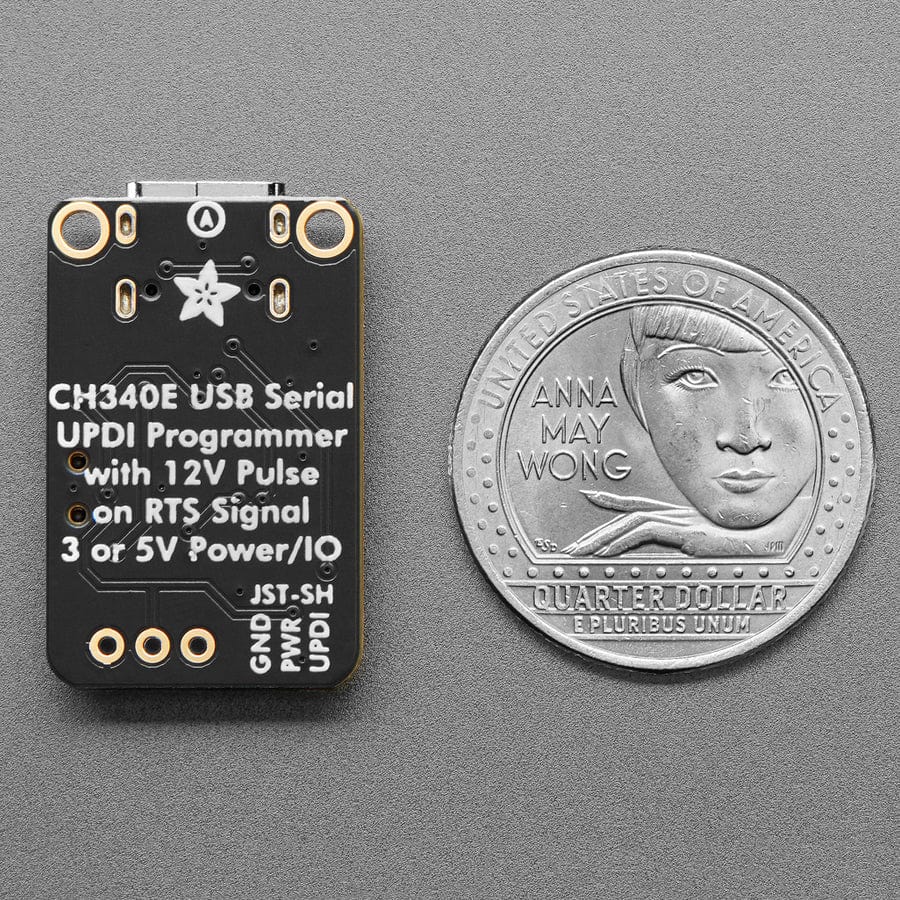
UPDI stands for Unified Program and Debug Interface, but this board is so small and cute that we will call it the Unusually Playful Device Interfacer and pat its head when it does a good job. It's designed to make programming modern ATtiny chips very easy because it has 3V or 5V power and logic select, power, and transmit indicator LEDs, and a quick cable for poking into a breadboard.
Unlike our simple UPDI version, this board is HV for High Voltage because it will let you send a quick 12V pulse to the UPDI right before programming. This is required when the chip is configured to use the UPDI pin as a reset or GPIO. This board will also let you 'unbrick' any chip configured for HV usage, you can use it to reset the fuses for low-voltage programming.
As for our seesaw boards, we have been working a lot with ATtiny816, ATtiny817, and ATtiny1616 chips lately. And we're often needing to program them with a CP2102-based breakout with a 1K resistor soldered between the RX and TX pins. But we were hankering for a nicer programmer!
This UPDI High Voltage Friend makes programming such chips very easy:
We use Arduino IDE with the megaTinyCore board support package installed; simply select "Serial UPDI" as the programmer type. We use 230Kbps, but 56Kbps is also good. In order to enable the high-voltage fuse settings, you'll need to edit boards.txt to remove the # comment tag on the “UPDI/RESET PIN CONFIGURATION” lines.





